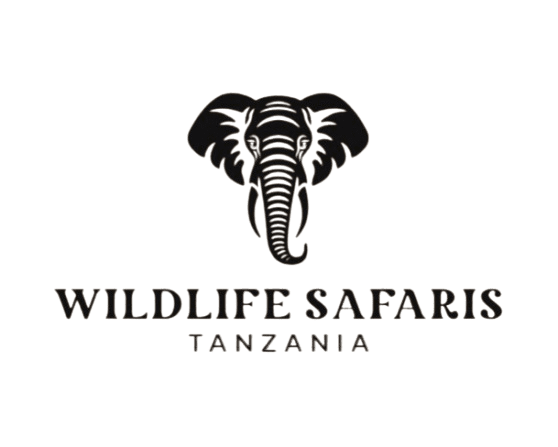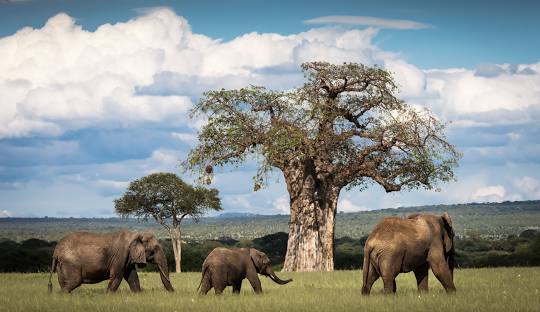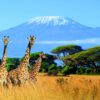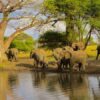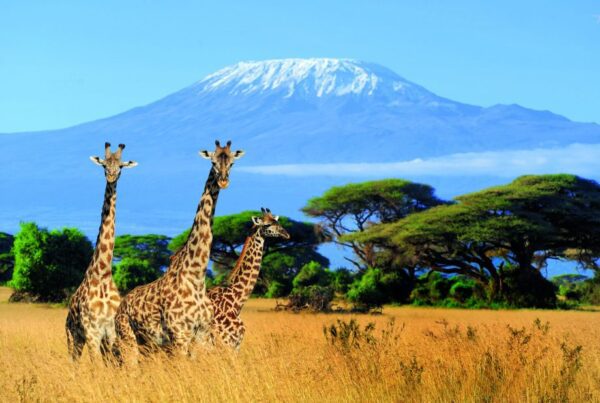In 2025, Tarangire National Park Will Be Revered As An Elephant Haven.
The Serengeti and Ngorongoro Crater are the unofficial focal points of any wildlife tour in Tanzania. Consequently, Tarangire gets lost in the shuffle, even though it’s strategically located in northern Tanzania between the Arusha and Manyara areas. Although few people are aware of it, Tarangire offers something truly special: the chance to see massive elephants up close and personal, and second only to the sight of towering baobab trees.
Tarangire is known as “the elephant paradise in Africa” because to its enormous elephant population. This park was rightfully named Africa’s Leading Elephant Paradise National Park 2025 by the esteemed World Travel Awards. Tarangire was named the winner during a spectacular event in Dar es Salaam, beating out three other parks: Amboseli in Kenya, Addo Elephant in South Africa, and Hwange in Zimbabwe.
Voters were only left with one choice—to support this Tanzanian park—despite the fact that each of the contenders houses an impressive number of tuskers.
Tanzanian Elephants
You may see elephants in a number of Tanzanian parks, but the only places you’re likely to encounter herds of 300 or more are in Tarangire and Ruaha. Many of these 300-strong herds are related via blood, with a small number of wise matriarchs serving as guardians and guiding the herds to pastures and watering holes.
It is unbelievable how many elephants live in Tarangire. A survey conducted by the Tanzania Wildlife Research Institute in August 2023 estimates that 1,088 people call Tarangire their home. Additionally, 26 blood-bound herds were uncovered in the survey. In addition, during the dry season, a large number of elephants travel to Tarangire. Consequently, there will be a plethora of them.
Those who dug the waterholes.
Elephants in Tarangire are known for their distinctive behavior, which includes the capacity to dig holes close to the banks of the Tarangire River, a life-giving river. In order to get to subsurface water sources during the dry season, elephants dig holes.
Their food relies on mineral salts, which they get by digging mud wallows. These wallows also serve to shield them from insects and the intense heat of the sun.
Not only do these waterholes benefit them, but they also benefit antelopes, buffalo, waterbucks, and even predators like as leopards, spotted hyenas, and lions. Consequently, elephants play a crucial role in the ecology of Tarangire and surrounding areas.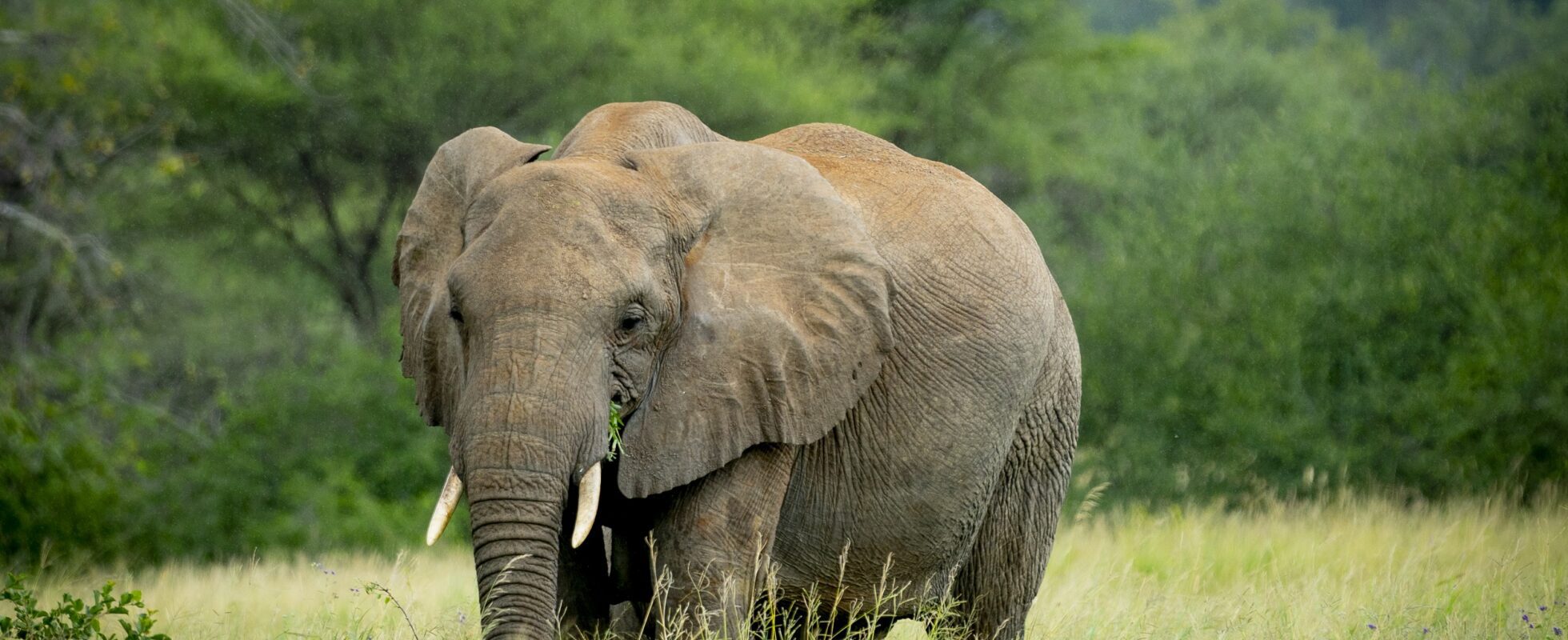
And this is what they use instead of waterholes.
Another method elephants use to satisfy their thirst is by cracking up baobab trunks. A baobab’s trunk can hold a lot of water, making it a notable succulent tree. Elephants will rip off the bark and gnaw on the inside to satisfy their thirst when water is limited.
The designers behind the bush
The woodlands of Tarangire are not dense; they are navigable because of elephants. Young acacia trees are their preferred food, and they prevent these trees from dominating wide grasslands by cutting off their outgrowths.
This causes the buffalo, zebra, and wildebeest to congregate in these open forests, where they eat. Consequently, elephants typically stick to their traditional habitats of broad woods, wide plains, riverine forests, and shrubland.
My two cents: it’s difficult to make your way through most woods when elephants aren’t around. Bwindi Impenetrable National Park in Uganda and the Mahale Mountains and Gombe in Tanzania are two excellent examples.
Moving beyond elephants, Tarangire
Aside from its enormous elephant populations, what else is Tarangire good for?
Infinite things exist. However, you’ll need to set up more than two days to really find them. On route to the Serengeti or Ngorongoro Crater, many visitors include Tarangire as an afterthought. Even still, mysteries will remain unsolved until then; perhaps you will be able to discover them. Here are some of the other attractions of Tarangire besides its abundant elephant population.
Movement of animals.
Animals travel great distances to Tarangire in search of water, shade, and the ever-present Tarangire River, which is essential to the survival of many species.
Like the Serengeti Migration, this one brings a wide variety of animals, including elephants, zebras, giraffes, lions, impalas, elands, leopards, spotted hyenas, and wildebeests. As you travel down the Tarangire River, which runs through the core of the park, you may easily see species due to this migration. Finally, it flows out into Burunge Lake.
Five Powerhouses.
In Tarangire, you may see lions, leopards, elephants, and Cape buffalo, among other wildlife. Tarangire is a less popular park where you may see these creatures up close. Once you’ve seen rhinos in Ngorongoro Crater and the Serengeti, you may cross them off your list.
Fifty-five birds and still going strong…
When we’re talking about birds, Tarangire is deserving of another crown and will likely claim it if the category exists. species of many sizes and shapes call its varied ecosystems home, from kingfishers and rollers to ostriches and other huge, flightless species. African fish eagles, helmeted guineafowls, lilac-breasted rollers, yellow-collared lovebirds, and splendid starlings are all within your reach.
How about we begin to plot out your next journey?
We would be delighted to show you around Tarangire’s many ecosystems so you can see tuskers, birds, and other animals up close. Feel free to ask us anything you want about this “elephant paradise.” Reach out to us.
